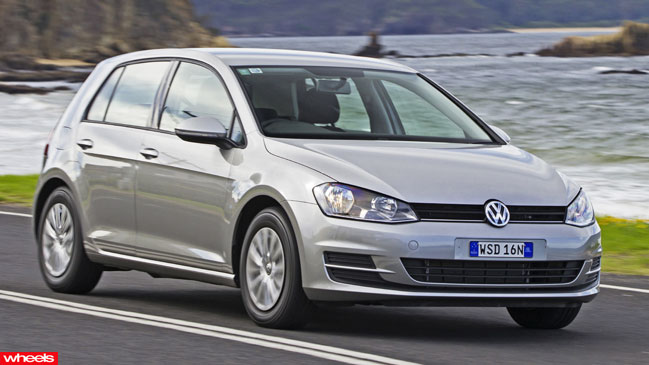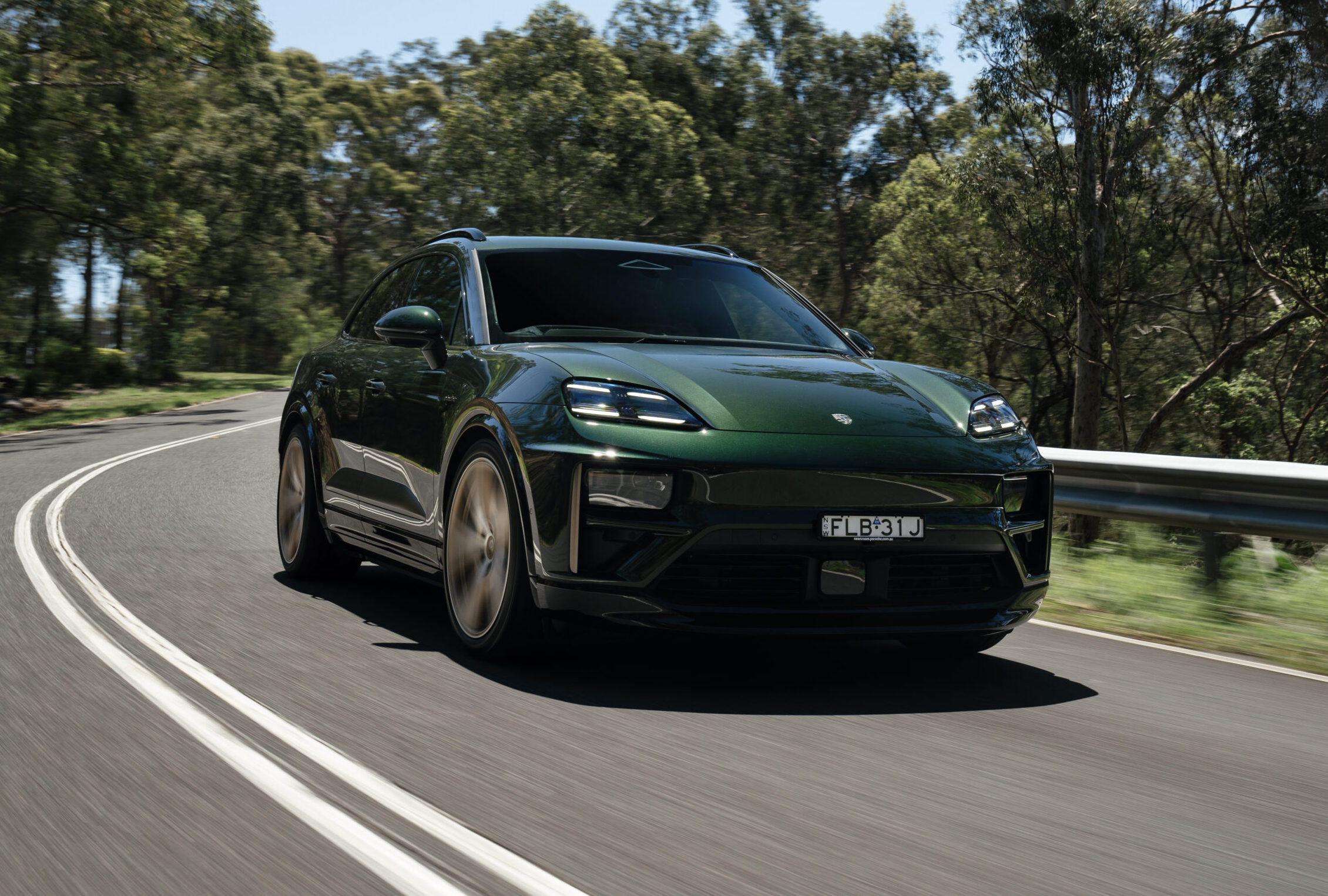Just five months before it was replaced, Golf VI easily won a 13-car Wheels’ Mega Test.
So the arrival of the even better Golf VII is surely the stuff of nightmares for rival car makers: VW has further sharpened pricing, improved economy, increased roominess and introduced a raft of advanced technology that only recently belonged in luxury cars.
The debut of the premium Highland version delivers a Golf that rivals BMW, Audi and Mercedes-Benz small cars in terms of refinement, performance and quality, and undercuts them on price unless you dive deep into the options list.
The result of a simplified range – drivetrain variants drop from nine to four – moves the Golf further away from its sub-$20K rivals.
Electing to open the range with the new, all-alloy 1.4-litre EA211 engine in 90kW form – the old 1.4 made 77kW – ensures that all Australian Golfs get the superior multi-link rear suspension. Any Golf VII with less than 90kW now comes with a cheaper, torsion beam rear suspension.
After being hugely impressed by the 103kW petrol and 110kW diesel Golfs at the international launch, we opted to taste the base $21,490 90TSI on local roads. How does it drive?
Well, like a Golf, so no surprises.
The turbo engine is all but inaudible most of the time (at least to 5500rpm) and revs smoothly to the 6000rpm redline and on to the soft 6500rpm cutout.
It’s not a high-revver, making peak power between 5000 to 6000rpm, with 200Nm of torque available from 1400-4000rpm, and wonderfully flexible with a strong mid-range.
In combination with a swift, light and accurate gearchange, the broad spread of power is easily accessed and without obvious turbo lag.
This is a fine drivetrain, lively enough to disguise its entry-level role, although it does demand a diet of 95RON fuel. Only a throttle travel that’s long and mushy in its first movements – the 103kW is even more doughy in feel – detracts from initial responsiveness.
The 90TSI runs 195/65R15 rubber on steel wheels and, as expected, the ride is supple, beautifully smooth and quiet. As you move up through the range – the extra $3500 Comfortline delivers alloys and 205/55R16s, the $31,990 DSG-only Highline 225/45R17s – compliance is reduced, the ride less smooth.
The most comfortable Golf is the cheapest.
The 90TSI still changes direction promptly, though the softer chassis settings ensure there’s more lateral bodyroll than the upscale variants. Still, the resolute front-end grip never deteriorates into heavy understeer and the chassis balance happily involves the rear end: lift or trail brake into a corner and there’s a subtle shift in attitude that adds to the Golf’s driver appeal.
The Golf VII steers accurately and smoothly, if without the directness of the Ford Focus, especially around the straight- ahead, where the VW feels slightly muted and less connected.
It’s a different philosophy: VW R&D boss Ulrich Hackenberg calls the Focus steering “nervous”, we’d argue that the Ford feels more agile. Either way, both are a class above the opposition, and the Golf’s dynamic cohesion and stability perfectly suit the car’s all-rounder character.
A 59mm increase in wheelbase to a more competitive 2620mm (still 30mm shy of the Focus), adds to interior space, and the black cloth upholstered front buckets are comfortable and supportive.
Rear accommodation is plentiful for the class and the boot has grown 30 litres to 380L.
The cooking variety Golf VII remains very Golfy; extremely competent, easy and satisfying to drive, with remarkable levels of refinement and economy.
The looks are slightly sharper than its predecessor and it remains unmistakably a Golf. Just better value than ever before.





